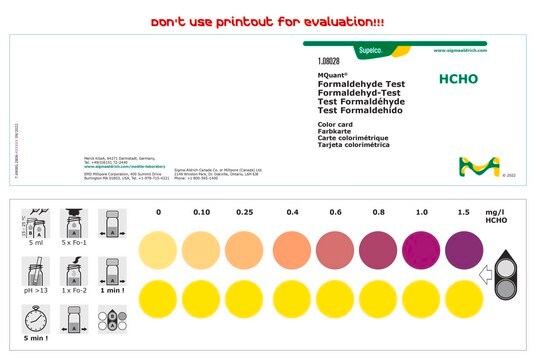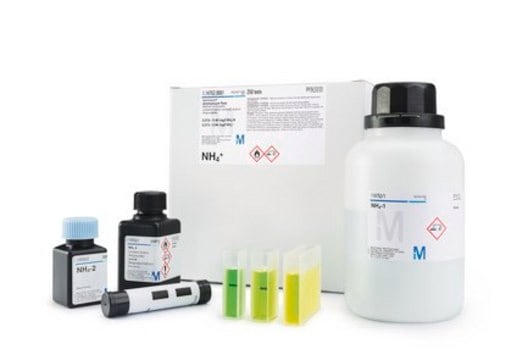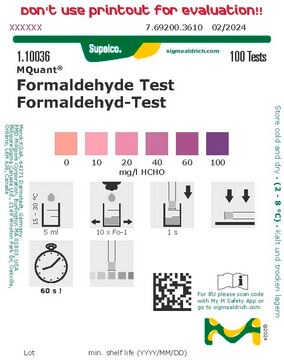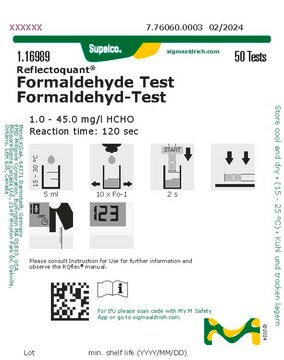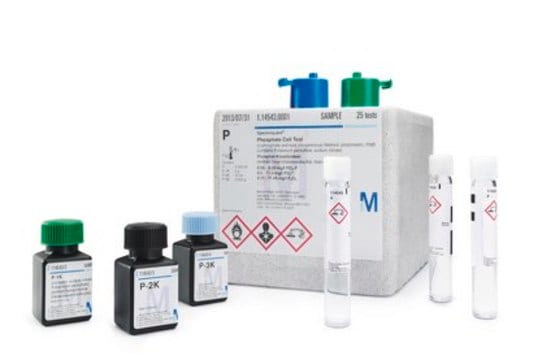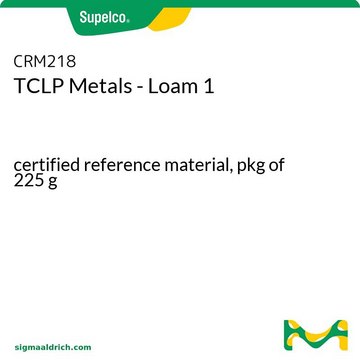Wichtige Dokumente
MAK131
Formaldehyde Assay
sufficient for 100 fluorometric tests
About This Item
Empfohlene Produkte
Verwendung
sufficient for 100 fluorometric tests
Nachweisverfahren
fluorometric
Relevante Krankheit(en)
cancer
Lagertemp.
2-8°C
Verwandte Kategorien
Allgemeine Beschreibung
Anwendung
- Modified Natural Rubber as a Simple Chemical Sensor with Smartphone Detection for Formaldehyde Content in a Seafood Sample.: This article explores the use of modified natural rubber as a chemical sensor, paired with smartphone detection, to measure formaldehyde content in seafood. This approach highlights the potential for accessible and mobile detection systems in food safety applications (Yeerum et al., 2022).
- Optical enzymatic formaldehyde biosensor based on alcohol oxidase and pH-sensitive methacrylic-acrylic optode membrane.: The study develops an optical enzymatic biosensor for formaldehyde, using alcohol oxidase with a pH-sensitive membrane, offering a novel approach for quick and sensitive detection in various analytical applications (Nurlely et al., 2022).
Leistungsmerkmale und Vorteile
Eignung
Prinzip
Signalwort
Danger
Gefahreneinstufungen
Acute Tox. 4 Oral - Aquatic Chronic 2 - Eye Dam. 1 - Met. Corr. 1 - Skin Corr. 1A - STOT SE 1 - STOT SE 3
Zielorgane
Eyes,Central nervous system, Respiratory system
Lagerklassenschlüssel
6.1C - Combustible acute toxic Cat.3 / toxic compounds or compounds which causing chronic effects
Hier finden Sie alle aktuellen Versionen:
Analysenzertifikate (COA)
Die passende Version wird nicht angezeigt?
Wenn Sie eine bestimmte Version benötigen, können Sie anhand der Lot- oder Chargennummer nach einem spezifischen Zertifikat suchen.
Besitzen Sie dieses Produkt bereits?
In der Dokumentenbibliothek finden Sie die Dokumentation zu den Produkten, die Sie kürzlich erworben haben.
Kunden haben sich ebenfalls angesehen
Unser Team von Wissenschaftlern verfügt über Erfahrung in allen Forschungsbereichen einschließlich Life Science, Materialwissenschaften, chemischer Synthese, Chromatographie, Analytik und vielen mehr..
Setzen Sie sich mit dem technischen Dienst in Verbindung.